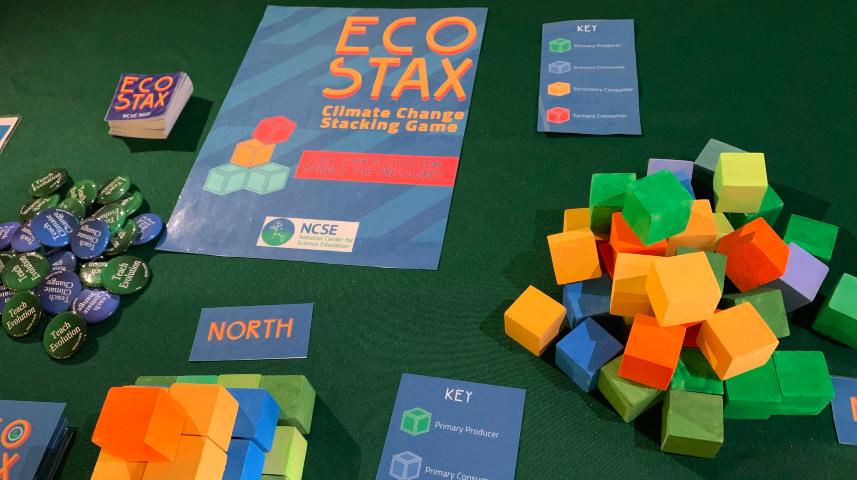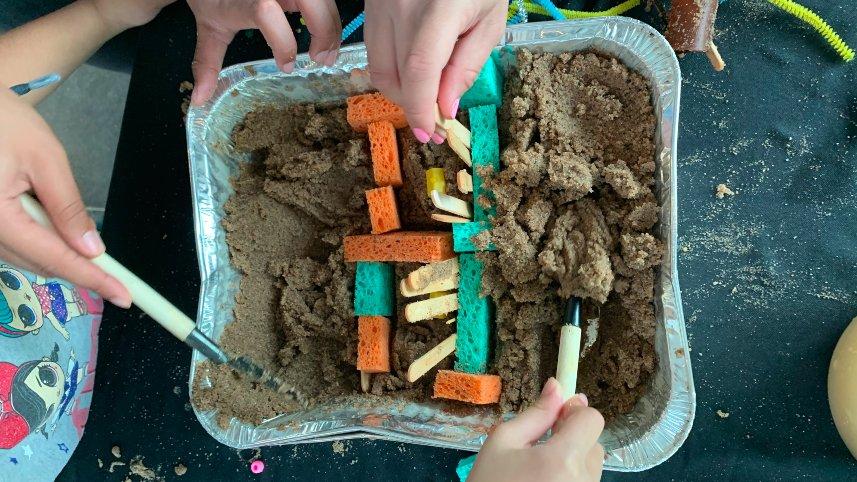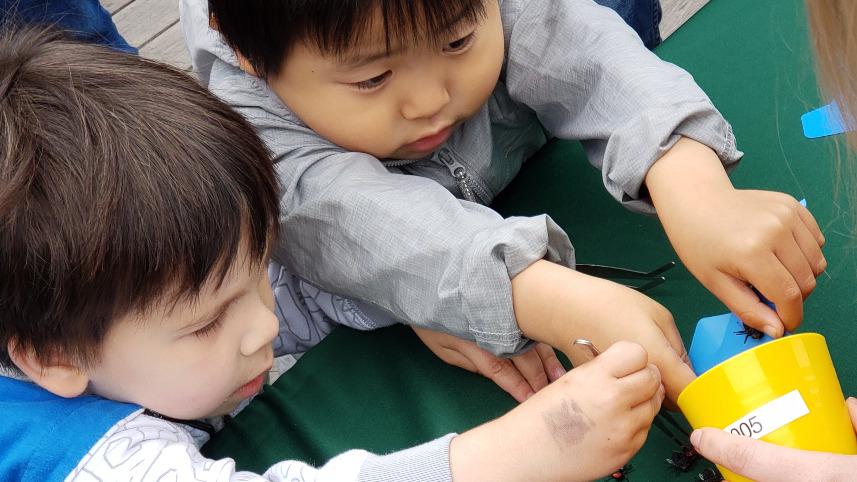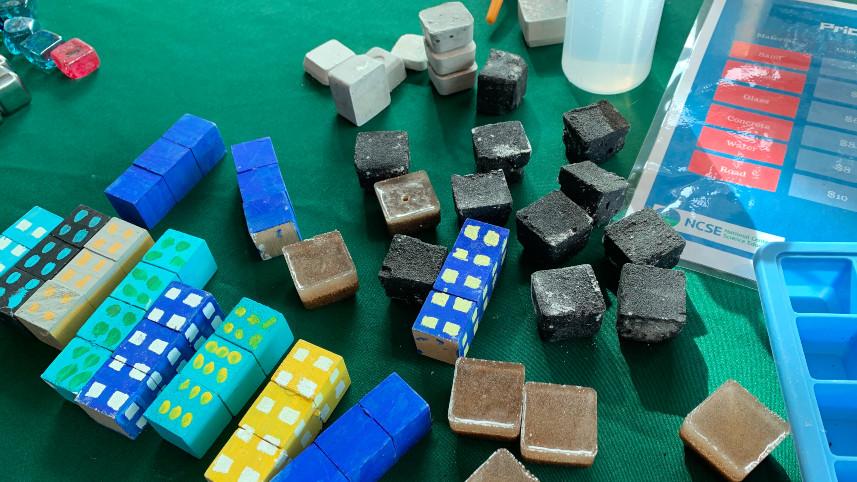Due to the spread of coronavirus, millions of parents and guardians are finding themselves having to take on the role of parent and teacher this spring. NCSE wants to support you during this unprecedented and challenging time — and to give you the opportunity to make sure that education about climate change is part of your child's at-home learning. Here are some activities that are fun (and easy for you to organize and lead!) to help keep your kids thinking about climate change. We've also provided some suggestions to extend the basic activity to make this a richer educational experience for a variety of grade levels.
Climate activities for at-home learning


Photo by Emma Doctors.
EcoStax
Climate change affects ecosystems in multiple ways. EcoStax helps illustrate how energy flows through an ecosystem and the ways in which climate change can affect energy sources, creating a domino effect. While playing the EcoStax game, participants simulate changes to one part of an ecosystem which allows them to develop systems-level thinking about the broader impacts of climate change.
- You'll need: Blocks of four different colors (household hack: try using Lego bricks or Origami boxes).
- You'll download: Our ecosystem cards and activity guide. Our ecosystem cards are part of our Supplemental Materials download, which along with our Activity Guide can be found on our EcoStax resource page.
- K-5 extension: Research an ecosystem of your choosing and assign every block a specific species.
- 6-8 extension: Research an ecosystem already affected by climate change and build this ecosystem as the starting set-up. Does this make winning the game easier or harder?
- 9-12 extension: Research and create 5 new cards showing how climate change affects different trophic levels and try the game with these new cards. (If you send a description of these to NCSE with your name and age, we might add them to our game!)

Photo by Emma Doctors.
Rising Tides
Warming oceans and melting landlocked ice caused by global climate change may result in rising sea levels. This rise in sea level combined with increased intensity and frequency of storms will produce storm surges that flood subways, highways, and homes. In this activity, participants design and test adaptations to prepare for flooding caused by sea-level rise.
- You'll need: a baking tray, sand, and some art supplies. You can find our supply list in the Training Guide on our Rising Tides resource page.
- You'll download: Our activity guide (also watch our training video).
- K-5 student extension: Draw your successful plan and explain why it worked.
- 6-8 extension: Using the suggested modifications in the training guide, work on a budget and design a solution to keep the house safe.
- 9-12 extension: Research areas where sea-level rise is already a big problem, then create a simulation of this coastal area (using multiple houses, rocks, etc.). Can you develop a solution to stop sea-level rise?

Photo by Kate Carter.
Buzz Off!
Mosquito populations are predicted to extend their ranges to new areas as a result of climate change. This brings about concerns for the spread of mosquito-borne diseases such as malaria, dengue, Zika, and West Nile. In this activity, participants can explore changes in mosquito populations over several decades, correlated to changes in temperature. They also learn multiple ways to suppress mosquito populations in order to create their own hypothesis about the most effective methods for mosquito control.
- You'll need: Something to represent flies (coins work in a pinch) and three types of tools (see supply list that's included in our Activity Guide).
- You'll download: Our data on mosquito rates over time (or get information locally). The data can be found in the Activity Guide on our Buzz Off! resource page (also see our training video).
- K-5 extension: Create a poster warning about mosquitoes and making suggestions about effective abatement strategies.
- 6-8 extension: Using the data currently available, construct a formula for predicting the number of mosquitoes by year. Use this formula to predict the number of mosquitoes for 2050 and 2100. Create a graph of this data, and use this to explain how climate change is changing mosquito populations.
- 9-12 extension: Research mosquito abatement strategies that are right for your area. Then write a short letter to the editor of your local newspaper calling for the strategy you have developed, explaining why it will be effective.

Photo by Emma Doctors.
Cool Cities
Many cities act as urban heat islands, significantly warmer than their surrounding areas due to human activities. Our warming climate will only make these cities hotter, leading to intense heat waves and lowered quality of life. Cool Cities allows participants to explore the ways cities can mitigate the heat island effect while taking into account urban planning.
- You'll need: Building supplies of different materials (wood, metal, stone, etc.), a hairdryer, something to measure temperature.
- You'll download: Our Activity Guide, which can be found on our Cool Cities resource page (also watch our training video), and our cards, which can be found in the Supplemental Materials section at the Cool Cities resource page.
- K-5 extension: Take measurements of how each building element retains heat initially; after 30 seconds; and after three minutes. What might this mean about building materials in the summer?
- 6-8 extension: Build your city, then explore ways to make changes to keep it cool. Develop these ideas into a poster about sustainable building practices.
- 9-12 extension: Cool Cities can be played as a board game with the cards we provide. Once your child or student has mastered building a sustainable city, challenge them to keep up with all of the social demands of running a city.

